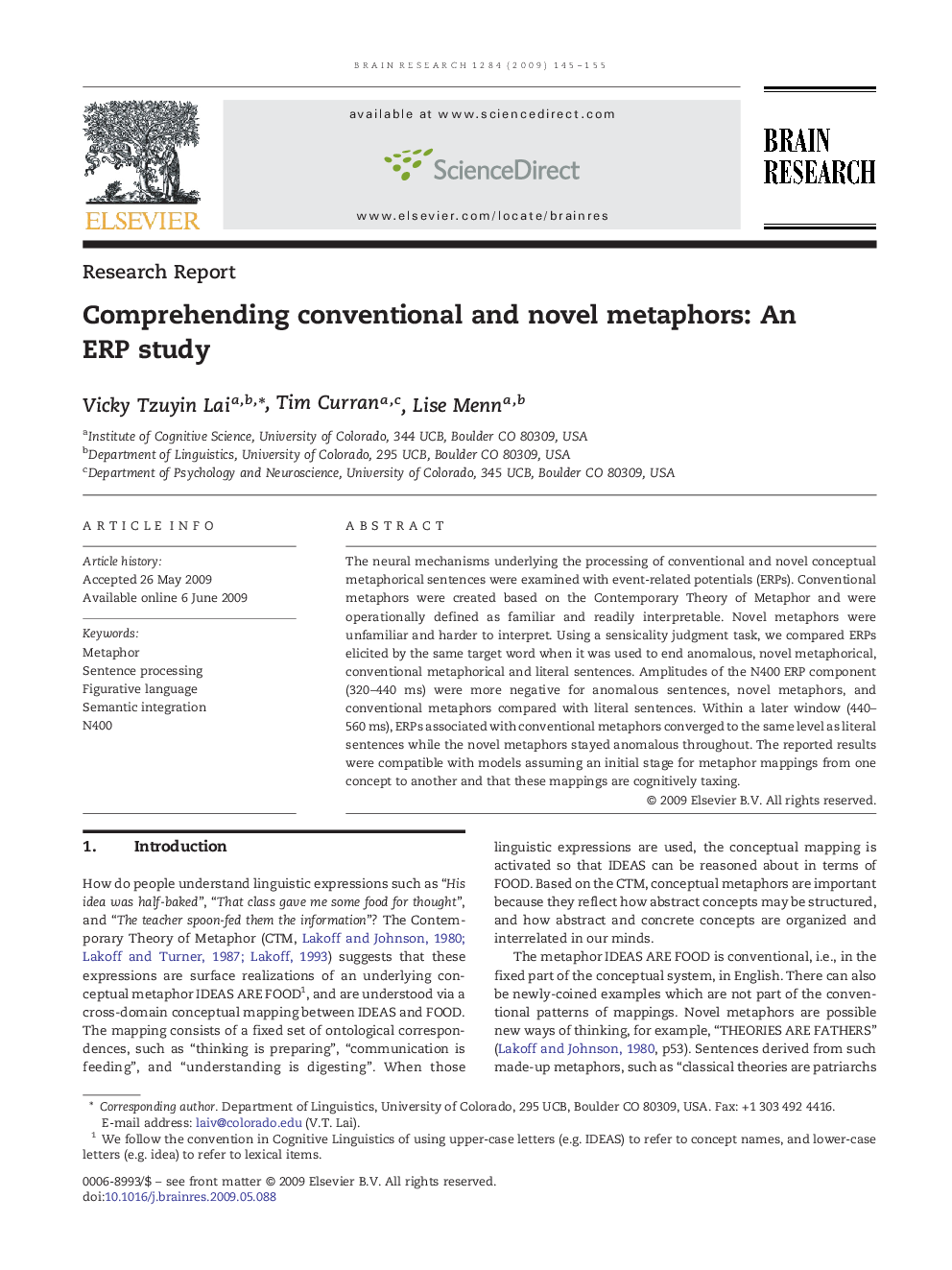| Article ID | Journal | Published Year | Pages | File Type |
|---|---|---|---|---|
| 4328115 | Brain Research | 2009 | 11 Pages |
The neural mechanisms underlying the processing of conventional and novel conceptual metaphorical sentences were examined with event-related potentials (ERPs). Conventional metaphors were created based on the Contemporary Theory of Metaphor and were operationally defined as familiar and readily interpretable. Novel metaphors were unfamiliar and harder to interpret. Using a sensicality judgment task, we compared ERPs elicited by the same target word when it was used to end anomalous, novel metaphorical, conventional metaphorical and literal sentences. Amplitudes of the N400 ERP component (320–440 ms) were more negative for anomalous sentences, novel metaphors, and conventional metaphors compared with literal sentences. Within a later window (440–560 ms), ERPs associated with conventional metaphors converged to the same level as literal sentences while the novel metaphors stayed anomalous throughout. The reported results were compatible with models assuming an initial stage for metaphor mappings from one concept to another and that these mappings are cognitively taxing.
